Chris Tarrant on Tiswas at 50: ‘I hated twee and patronising Blue Peter – we wanted to be the opposite’
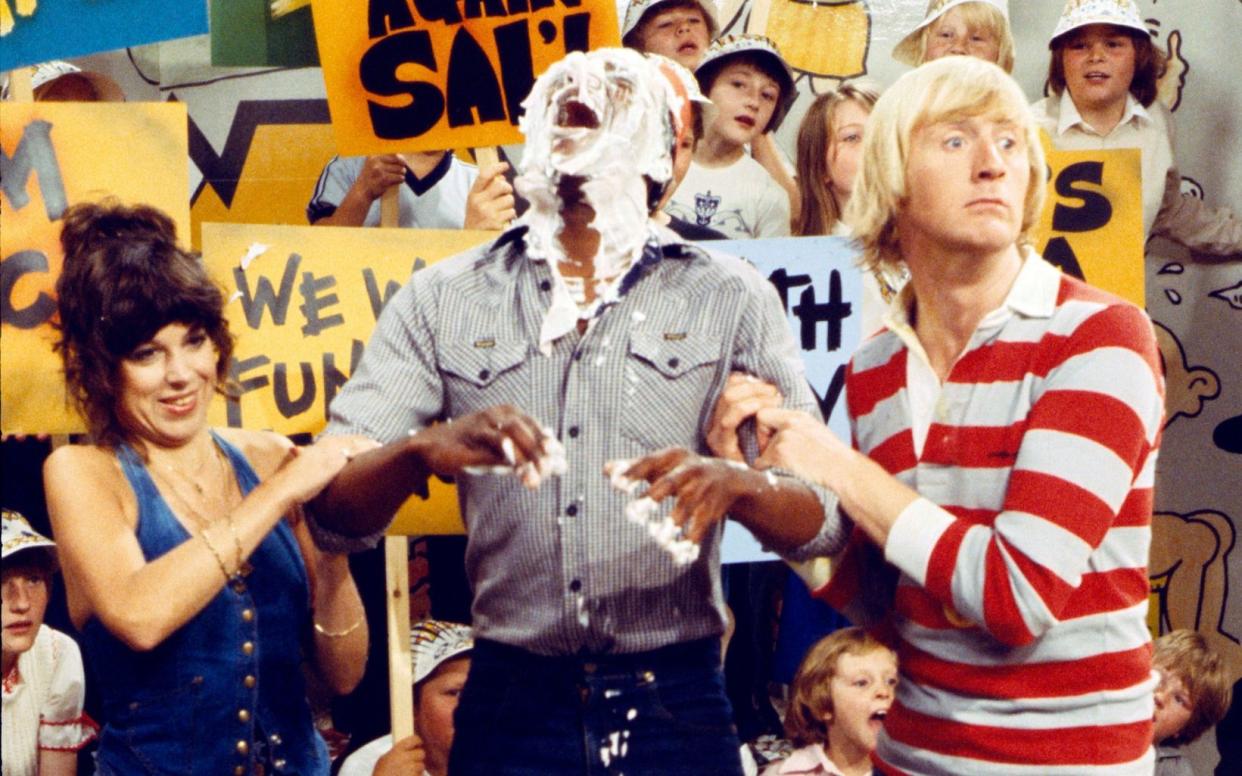
When Chris Tarrant looks back on a broadcasting career that now spans six decades and includes the quizzing juggernaut that is Who Wants to be a Millionaire?, he doesn’t need to phone a friend to decide when it peaked.
“I remember one morning that I was rolling in custard with Annie Lennox, Sheena Easton and Chrissie Hynde from The Pretenders. I’m there thinking, ‘I’m being paid for this!’” he says.
Tarrant wasn’t dreaming. Starting in early 1974, the then 27-year-old local newsreader presented Tiswas: a subversive kids’ TV show so successful that it inspired countless copycats, as well as fan clubs that remain active 50 years after its launch.
Until it eventually fizzled out in 1982, the live ITV show became a fixture of Saturday-morning telly for a generation gripped by its anarchic antics, reaching a peak audience of five million.
“It was huge, we were rock stars,” says Tarrant, who conducted the chaos alongside presenters including Sally James, John Gorman and a very young Lenny Henry. “Everywhere we went we were mobbed and signing autographs until our hands fell off.”
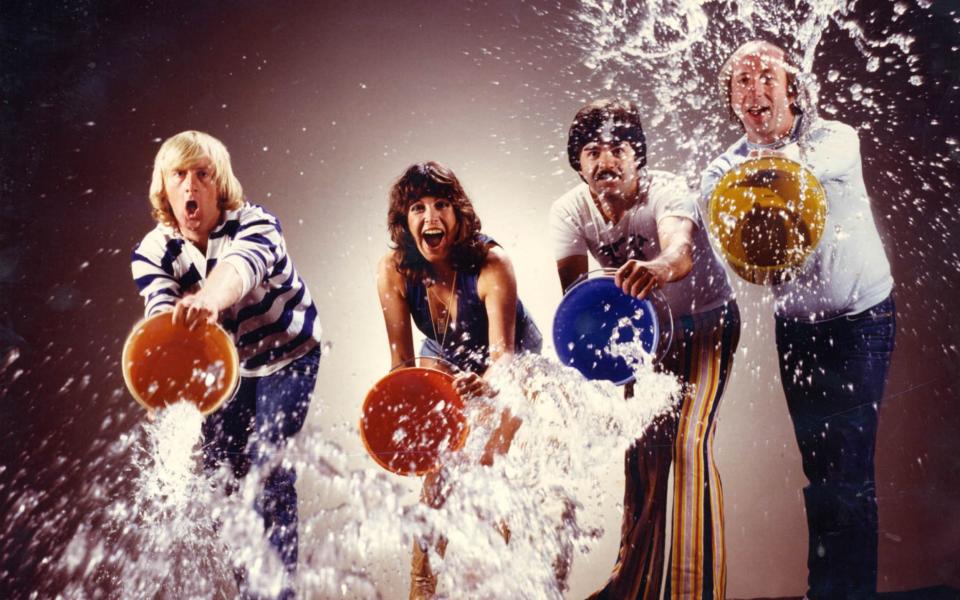
Tarrant, 77, was part of a core group of “four bucketeers” with main presenting duties, which included sketches, interviews, and the ritual hurling of water at people who were locked in a cage at the studio in Birmingham. Celebrity guests were also pelted with custard pies and gunge.
“You really couldn’t make Tiswas now,” the presenter says. “You’d have health and safety there whingeing about how much water you had in a bucket and all that stuff… It’s silly the way the world has turned.”
The show started on Midlands-based ATV, then one of the big five regional networks that made up ITV, before it was taken up across the country. Tarrant had been reading the news at the station, which he continued to do after the launch of Tiswas.
“I remember the bosses started talking about a credibility gap,” he recalls. “On the Friday I’d be talking about a bus crash and on Saturday I’d be throwing buckets of water at people. They said I’d have to make a choice, assuming that in the interests of my long-term career I’d go for the bus crashes.”
They were wrong and Tarrant and his co-stars, who also included Bob Carolgees and his puppet Spit the Dog, delighted in also flinging a flan, as the custard pies were known, in the face of the BBC, whose big bi-weekly studio offering was Blue Peter.
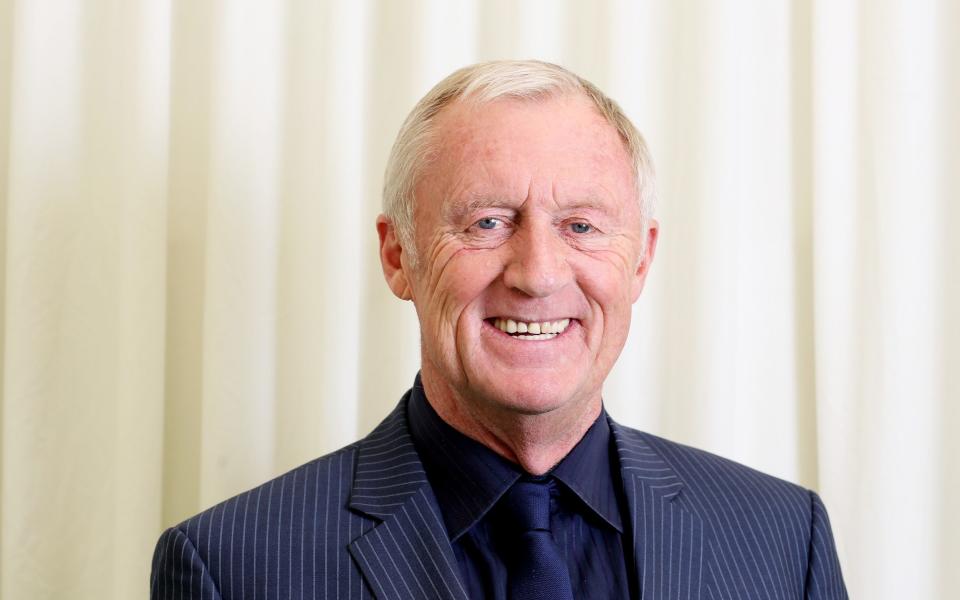
“You could do whole university theses on why Tiswas was so successful, but basically I just hated Blue Peter,” Tarrant says. “It was so twee and patronising. All we wanted to do was be so unlike it and actually have children on the show.”
Even the most uptight suits at the BBC began to take notice of the show’s huge ratings, and the Corporation launched Multi-Coloured Swap Shop with Noel Edmonds, Keith Chegwin and John Craven, in 1976. It did well but was far more restrained.
“Tiswas was still just so different,” says Sally James, who joined the ITV show in 1977. “You had Noel Edmonds being very serious, swapping a garage for a Barbie doll, and then us.”
James, 73, who now runs a school uniforms store in Surrey, remembers things occasionally going too far. “People would come on and think they had to be really mad and stupid,” she says. “The band Madness came on and at the end of the interview they started spraying silly string at me. It went down my throat and I was choking on air… they apologised and were much better behaved the next time they came on.”
Nobody channelled the anarchy of Tiswas better than the Phantom Flan Flinger, a mysterious character dressed in black who would throw custard pies at people, often including hapless camera operators.
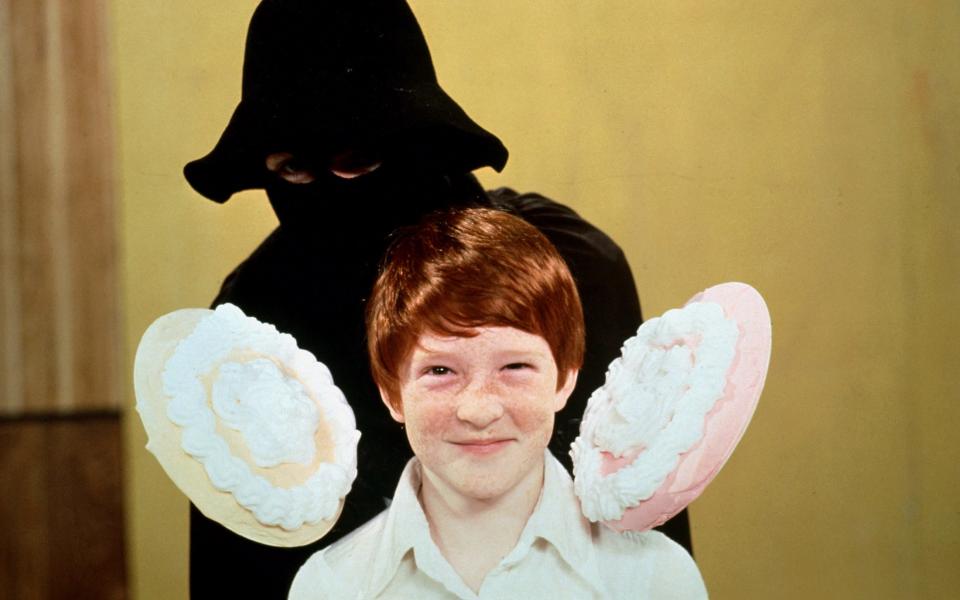
One flinger was later revealed to be Benny Mills, a local taxi driver who had met producers while giving them lifts to the studio. But the first person to don the Flinger’s black cape was Helen Piddock-Jones, who had been an ATV news presenter alongside Tarrant.
“I’m very tall and a lot of the children were frightened of me, so I’d hide in the wings and come out,” she says. “And I’d quietly say to them ‘don’t worry’ and they’d get a shock when this woman’s voice came out of the costume.”
Tiswas was sometimes accused of being cruel to its youngest studio guests. “Someone wrote in a newspaper that they’d seen a child crying and I thought, have you ever been to a sixth birthday party?” Tarrant says. “I hate people who talk to children on television as if they’re little things to be wrapped in cotton. They’re not, they’re tough little b--gers.”
In fact, children were desperate to get on the show and queued up for audience auditions. Matthew Butler’s mother made him a rabbit suit for his audition, inspired by his love of Bright Eyes, the hit Art Garfunkel song written for the animated film Watership Down.
Butler’s audition was successful and, in a 1980 episode of Tiswas, the five-year-old belted out Bright Eyes as the credits rolled. The chasm between his enthusiasm and talent made him a pre-internet sensation. “The singing was awful but by the time they released it as a record it was good enough to smash into the charts at about 128,” Butler recalls.

Butler, now 49, went on to become a firefighter, and still occasionally dons larger versions of his old rabbit suit. In 2015, Chris Evans, a big Tiswas fan, persuaded Butler to perform Bright Eyes on stage at CarFest, his music and motoring festival. Butler waved a carrot in the air as 40,000 people sang along with him. “I never thought that even now, 44 years later, people would be asking me to come to things and dress as the rabbit,” he says.
Celebrities also lined up to appear on the show. “It became a badge of honour – you hadn’t made it in kids’ eyes unless you’d been on Tiswas and been part of the mayhem,” says Glyn Edwards, a veteran Punch and Judy performer from Brighton who joined as a producer and director in 1978. He introduced Sally James, the Phantom Flan Flinger and the cage.
Spike Milligan was such a fan that he wrote a letter begging to go on, despite not having anything to promote. “We paired him with the comedian Frank Carson, who was nutty as a fruitcake, to do a parody of Mastermind,” Edwards, 79, says.
The show made a star of Lenny Henry, who first attracted attention aged just 16 with his comedic impressions on the New Faces talent show in 1975. When Tarrant, who was also a producer on Tiswas, was looking for someone who could do an impression of Muhammad Ali for a sketch, Henry’s name came up. “He became a complete fixture,” Tarrant says of the comic actor, who became famous for send-ups of David Bellamy and Trevor McDonald as the character Trevor McDoughnut. “He’s without exception the most talented person I’ve produced in my life.”
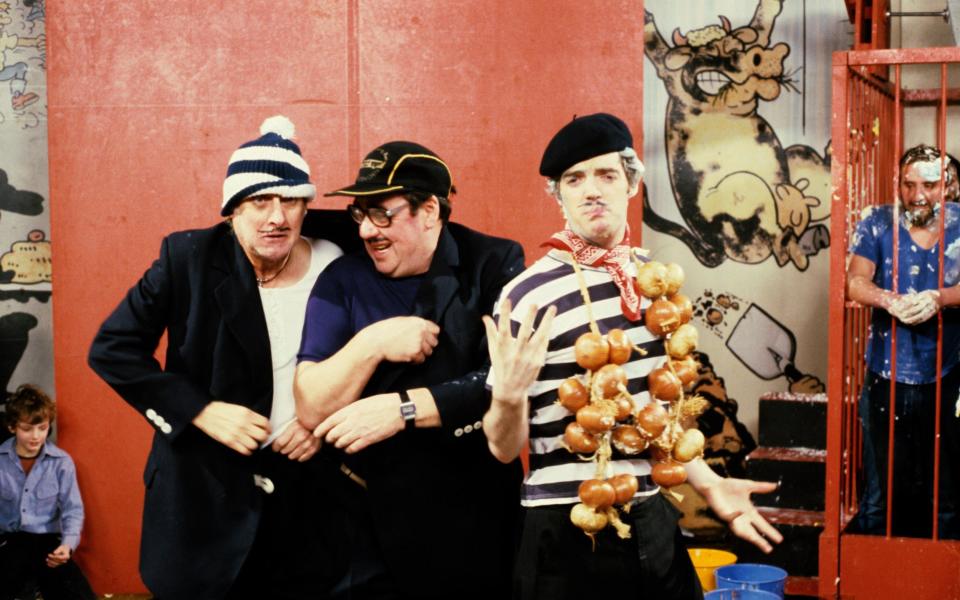
Tarrant and James were amused to watch the BBC copy so much of what Tiswas had introduced. Its gunge-soaked legacy runs through shows including Going Live!, Live & Kicking and Noel’s House Party.
In 1980, Tarrant, James, Carolgees and fellow bucketeer John Gorman reached 26 in the pop charts with The Bucket of Water Song. Tarrant remembers the gang getting its comeuppance after a performance in Brighton.
“We were in this nice restaurant and a terribly well-spoken woman just came up, picked up the ice bucket our wine had been in, and poured it over Sally’s head,” he recalls. “We said, ‘what the hell are you doing!’ She said, ‘well, that’s what you do, isn’t it?’”